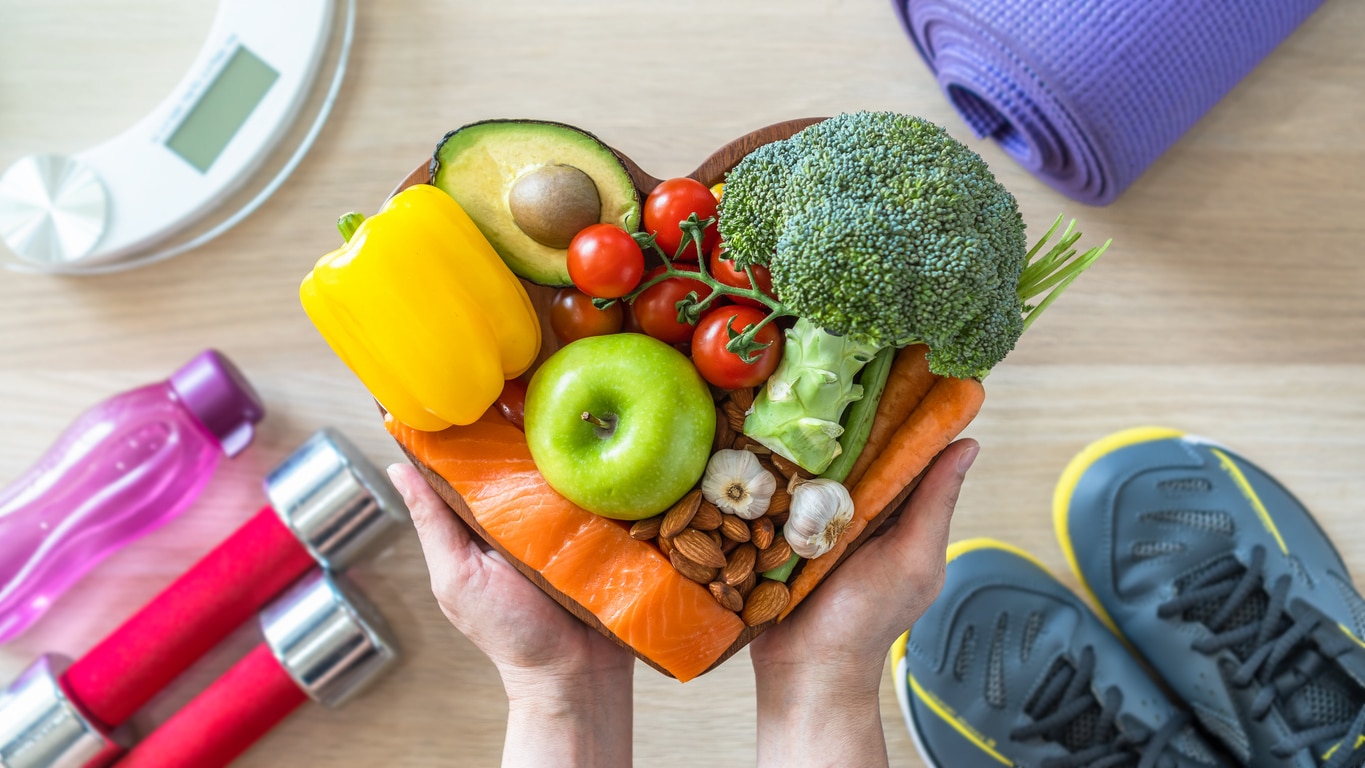Eating well and maintaining a healthy weight may seem mutually exclusive. Whether you want to lose weight or gain a few pounds, the choices at the grocery store can pose a considerable challenge to sustaining a healthy diet and achieving your goal. Before you give up, however, consider these tips from experts to maximize nutrition and manage weight safely.
Good habits for overall nutrition
Regardless of your weight goal, good nutrition is essential for staying healthy and minimizing risk for a variety of diseases and conditions. One of the best ways to maximize nutrition is to avoid processed foods and choose fresh first. For example, choose whole grain bread, pasta and rice rather than refined versions to get more fiber and help lower the risk of heart disease, diabetes and some cancers. To help make good choices check out the livestrong.com article, “How to Avoid Processed Foods and What to Eat Instead.”
Another good habit is to snack wisely. Instead of stocking up on chips and cookies that are full of fats and sugar hit the produce section for fresh fruits, vegetables and nuts to fill the void. It also helps to prep snacks so they are ready when the urge hits, such as cutting carrot sticks to dip in hummus, baking a batch of whole grain muffins, and pre-washing fruit like apples, pears and blueberries so they are ready to grab-and-go when you are. The more you can do to make healthy snacks as convenient as unhealthy ones are, the easier it will be to make the right choice.
While eating smart is key, so too are healthy habits like drinking plenty of water (not juice or soda), getting regular exercise and prioritizing adequate sleep. For more expert tips and information check out the nia.nih.gov article, “Maintaining a Healthy Weight.”
Nutrition and weight loss
If losing weight is your goal, you probably already know what a challenge it can be. While there are plenty of expensive weight-loss programs available, the mayoclinic.org article, “Weight loss: 6 strategies for success,” notes that losing weight is really as simple as controlling calorie intake while increasing physical activity.
To accomplish this you will likely need to make some changes in not only what you and how much you eat and create a regular exercise routine that is actually doable. First, consider what food and eating mean to you and how motivated you are to make the necessary changes by reading the clevelandclinic.org article, “The Psychology of Eating.”
Next, create a plan that balances both food and exercise to your benefit. A great tool to help is the niddk.nih.gov “Body Weight Planner” which defines how many calories you can consume based on the amount of exercise you get to reach your desired weight.
Another way to increase your odds of success is to join others with the same goals. According to the gnc.com article, “Losing Weight Together, the Importance of a Partner,” having a partner while dieting can help you stay on track, provide support during tough periods, and be there to celebrate when you reach your goal.
Nutrition and weight gain
Gaining weight is equally difficult and is every bit as important to good health for those who are underweight. In fact, being thinner and having a lower body mass index (the measure of body fat based on height and weight) is less healthy than having a higher BMI and being slightly overweight. With a normal BMI at 18.5-24.9 having a BMI lower than 18.5 means you are underweight and a BMI over 24.9 either overweight or obese.
That said, there are ways to gain weight and keep it on, with a bit of planning. Start with the niddk.nih.gov “Body Weight Planner” to determine how many calories you need to consume each day based on your level of activity. Next, consider foods with the healthy calories needed to reach your goal. According to the clevlandclinic.org article, “How to Gain Weight Safely,” calorie-dense foods include cheeses, nuts and nut butters, and dried fruit. Another option is adding a protein shake or smoothie, especially for those with small appetites. If eating large meals is a problem, consider eating more meals and snacks throughout the day, preferably two or three hours apart. For great meal ideas the eatingwell.com article, “Healthy Weight-Gain Meal Plan,” can help.
When considering any diet always be sure to consult your physician first. They may also have tips and meal plans to share.
At Countryside, nutrition and health are top priorities in our comprehensive wellness plan. For more information about Countryside, please call Margaret Nagel at (517) 206-5000 or download our brochure to learn about our care levels, cost, and amenities.


